The brown bear mothers of coastal Alaska work hard to feed, teach and protect their young offspring
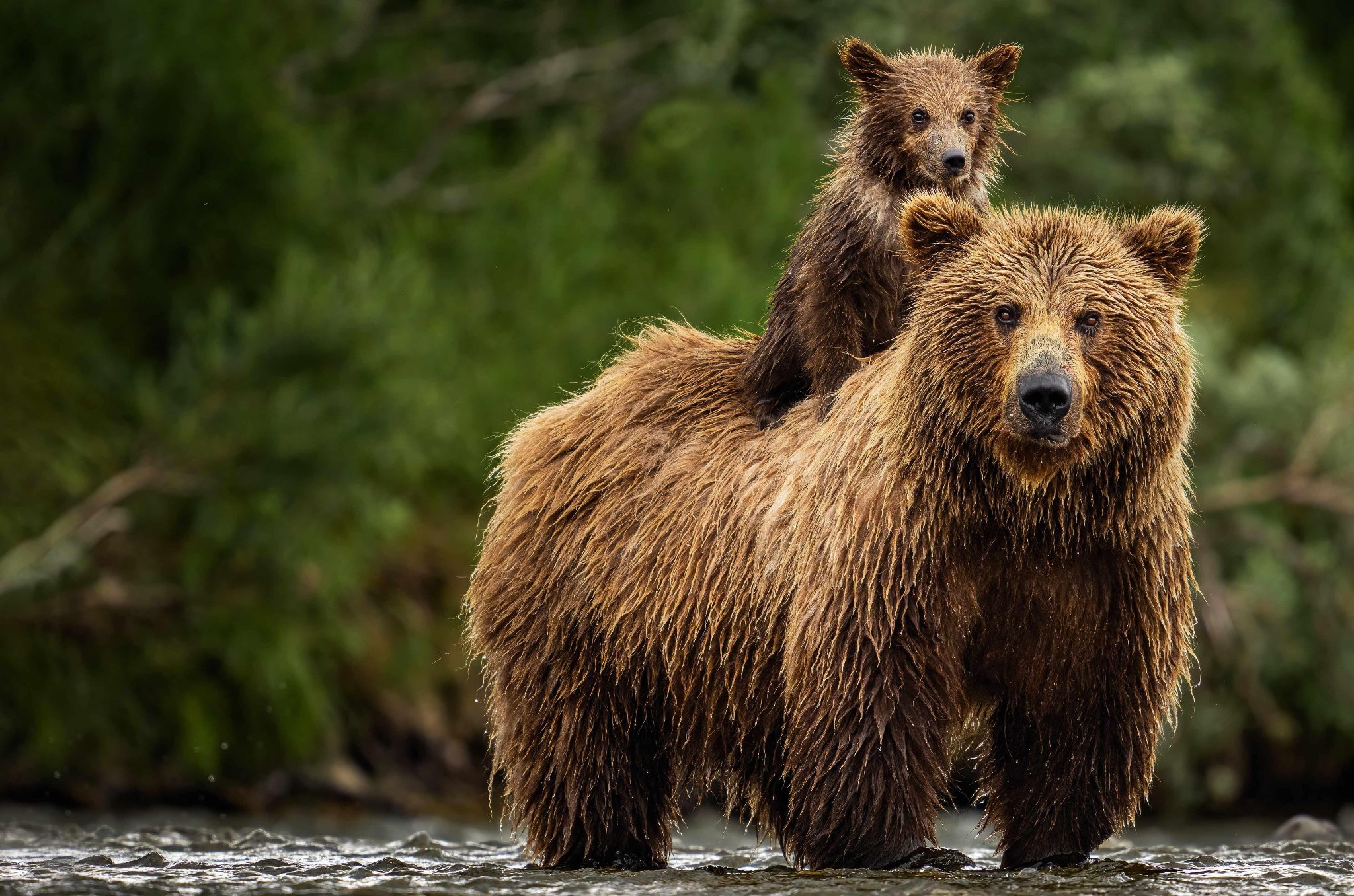
One up
This lucky six-month-old cub’s tolerant mother allowed him to ride on her back. “We think she’s a first-time parent who developed a special bond with her offspring,” says Kate and Adam Rice, who photographed these images in Alaska’s Katmai National Park and Preserve – home to some 2,200 brown bears – over the bountiful summer months.
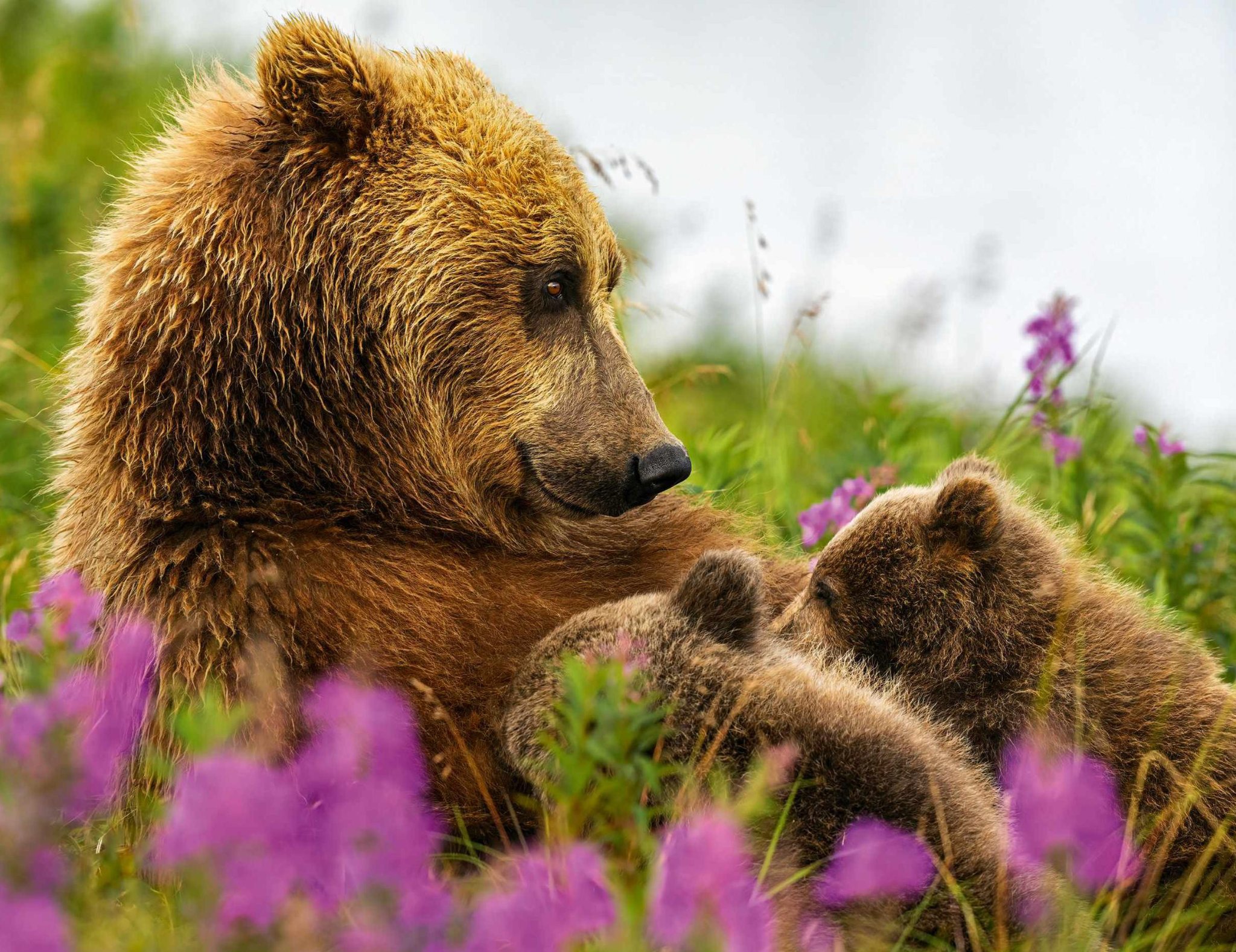
Mother’s milk
There’s no respite from suckling for a mum of twins – a typical litter size, though triplets aren’t uncommon and quads not unheard of – feeding among the fireweed in August. They’ll continue to demand milk for two or even three years after their birth in February, in mother’s winter den.
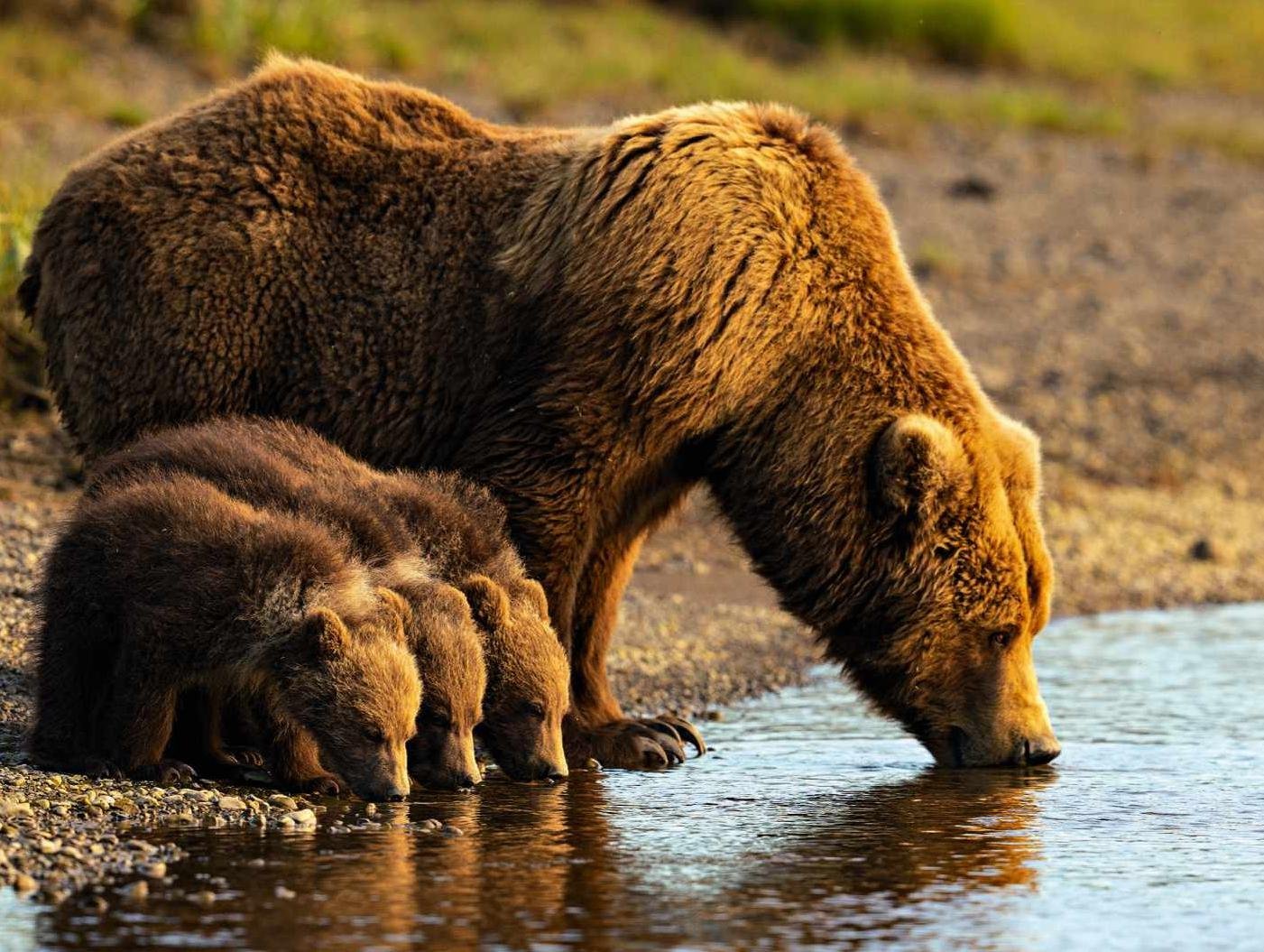
Three’s a crowd
This brown bear mother has her paws full with triplets, the father having left shortly after mating between May and July. As well as keeping an eye out for threats – mostly adult male bears and, occasionally, wolves – she must teach them to feed themselves and stay safe.
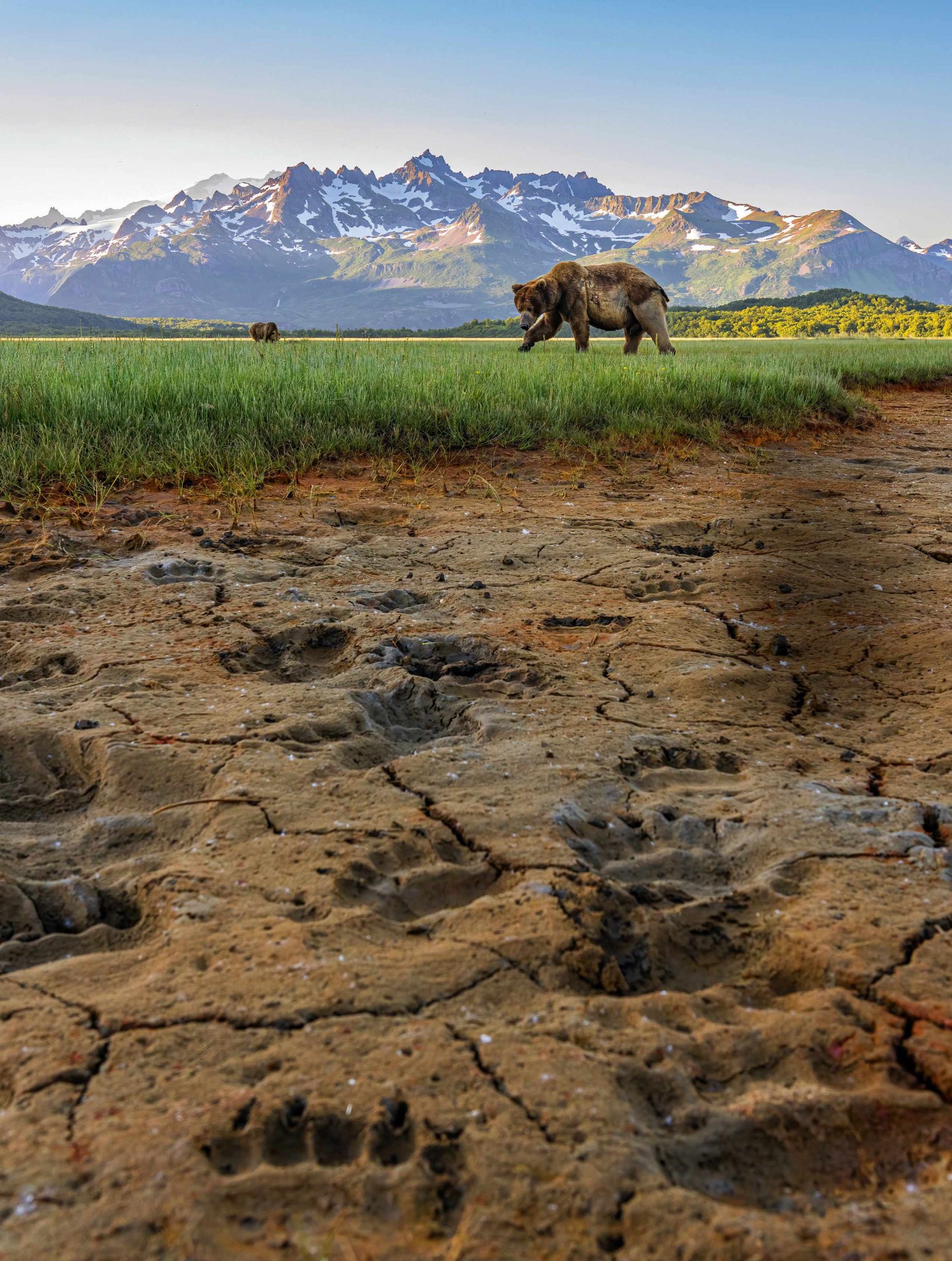
Paw patrol
A male and female brown bear graze sedge, a high-protein food source in coastal regions that’s important in spring and early summer. He’s watching for an opportunity to mate, after which implantation of the fertilised embryo is delayed till autumn when, if she’s built up sufficient fat reserves, pregnancy proper will begin.
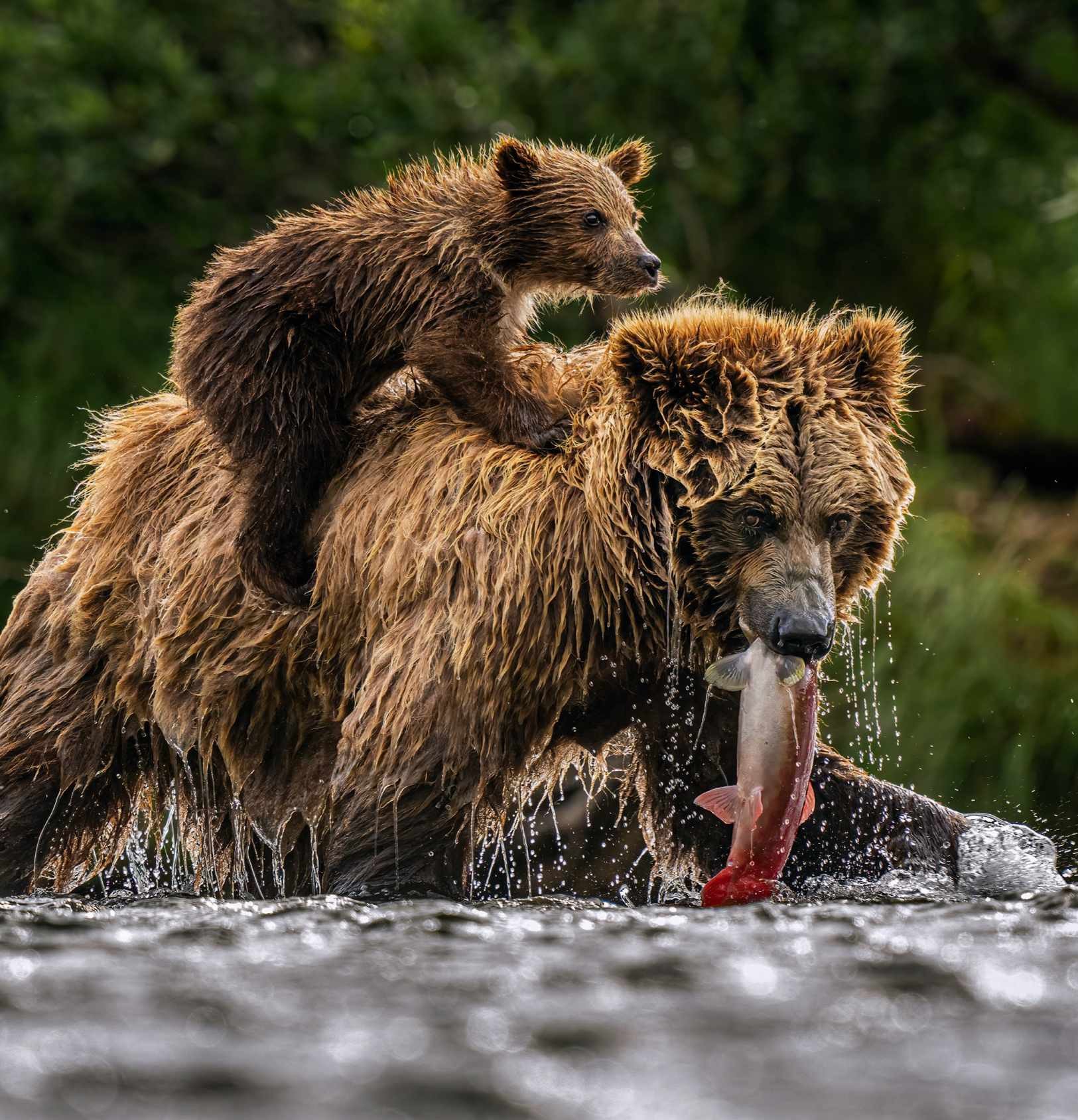
Burden of youth
That clingy cub won’t relinquish his perch even while mother is fishing for sockeye salmon. While continuing to suckle, he’ll pinch scraps of her meals, gradually learning to fish and feed himself over the following two or three years. Born blind, naked and only about half a kilo in weight, at six months old he’s already perhaps 25kg.
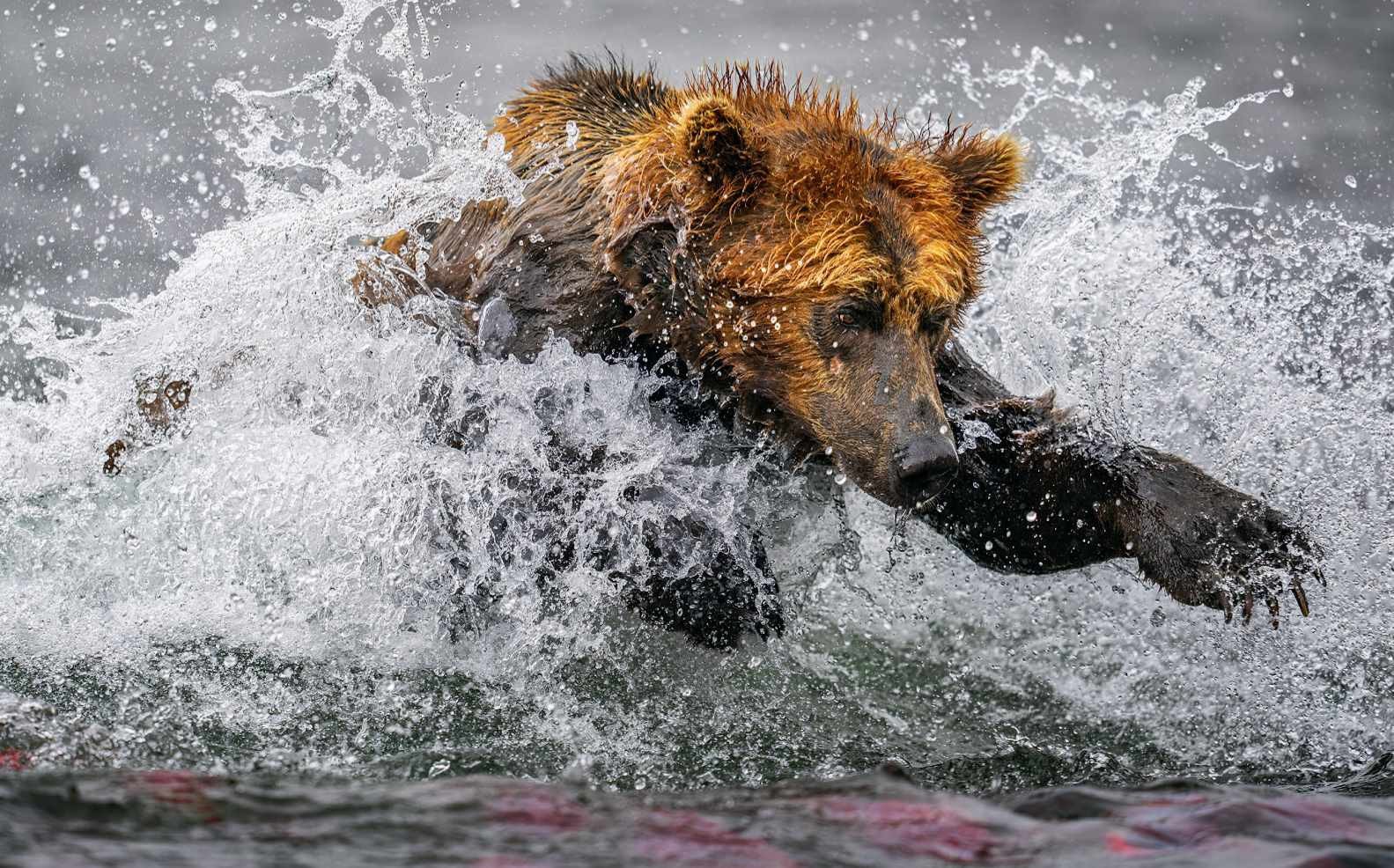
Making a splash
Surging through the shallows, this hungry bear targets sockeye salmon, which swim upstream to spawn in Alaskan rivers each summer. When salmon’s not on the menu, omnivorous brown bears will eat grass, roots, berries, insects, reptiles and sometimes other mammals – even young moose or caribou (reindeer).
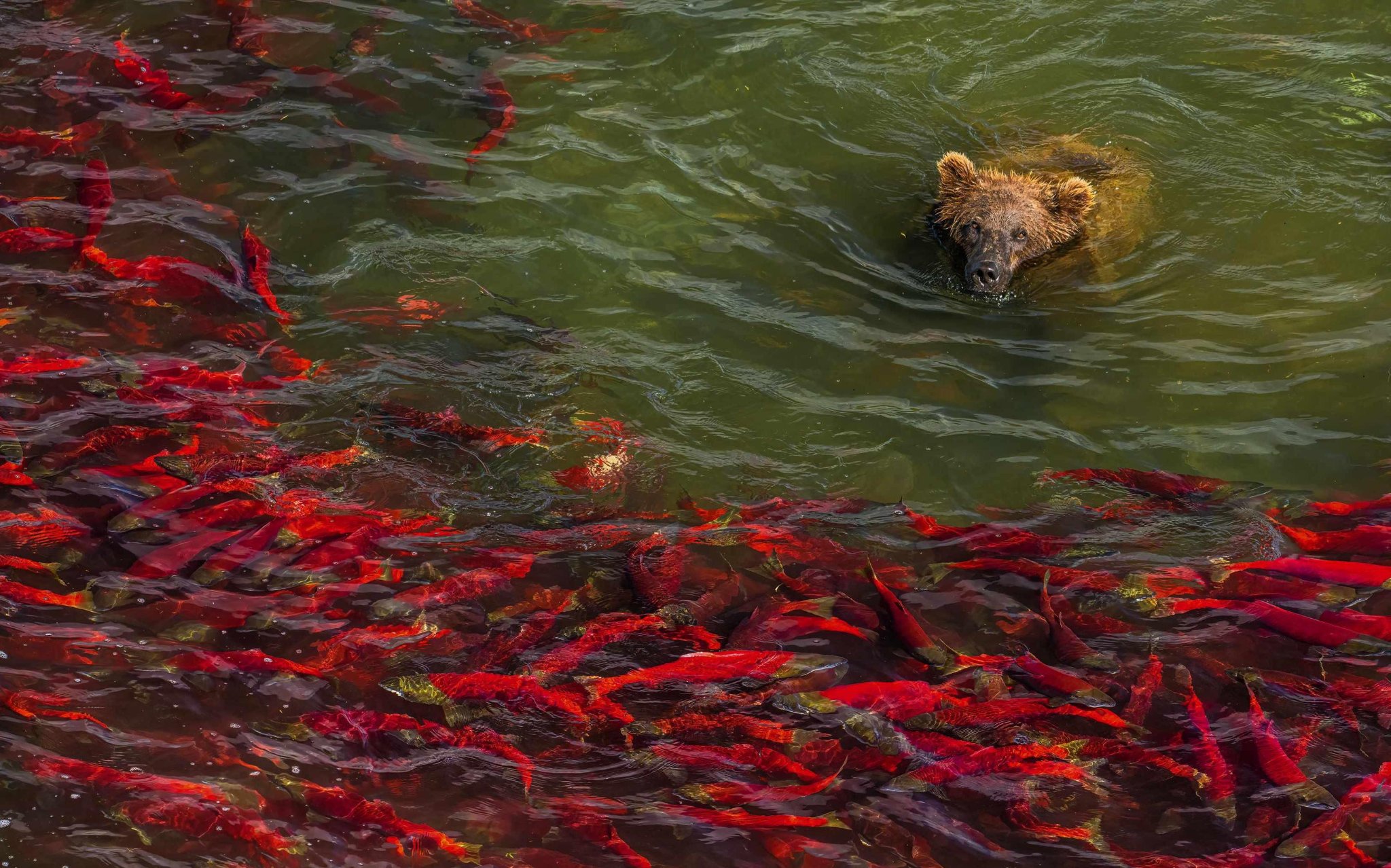
Seeing red
With their vivid red bodies and greenish heads, sockeye salmon – which can reach over 70cm long – are tantalising prey. Yet paddling through deep water to reach a dense shoal isn’t the most effective way for even this strong-swimming bear to catch them.
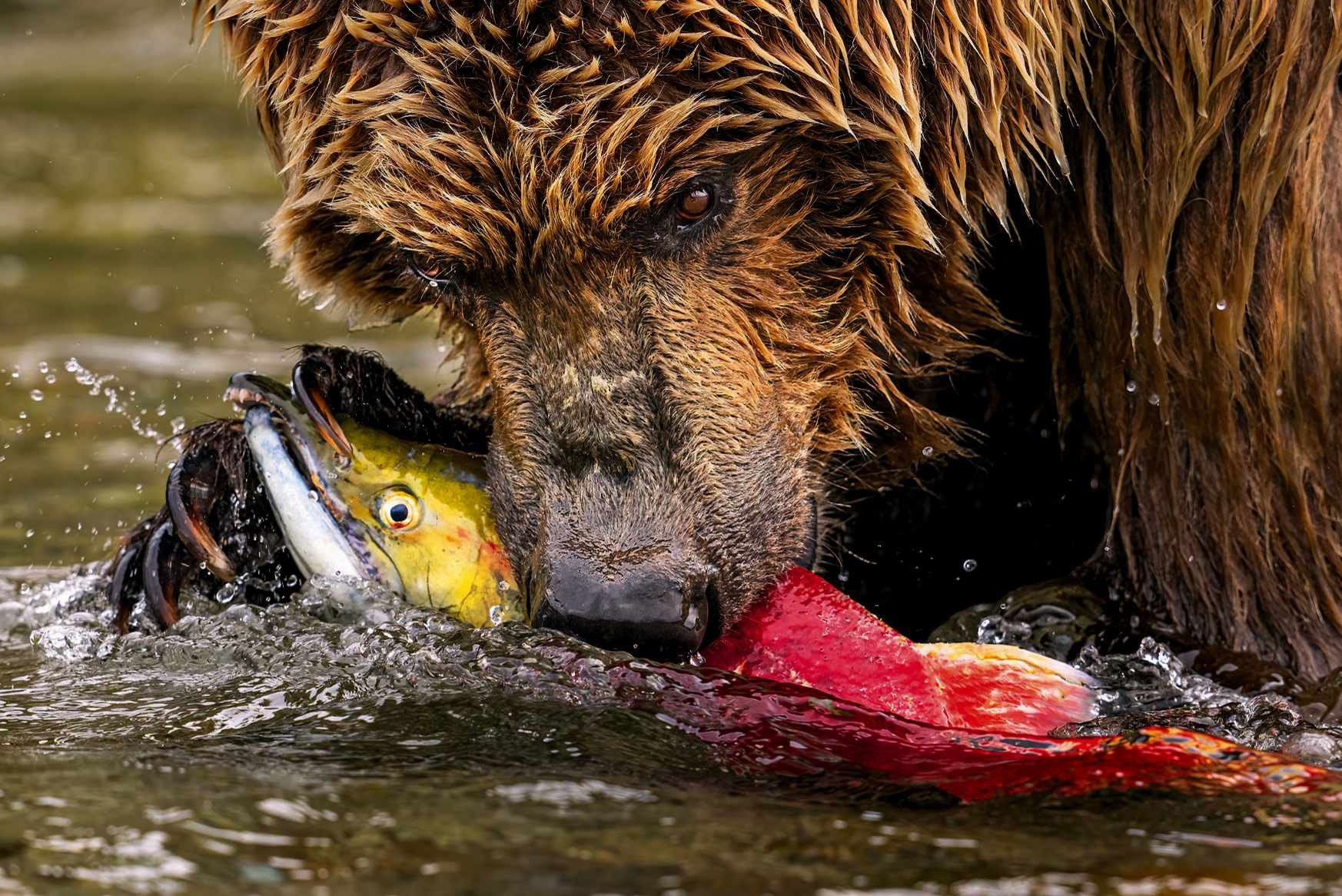
Picky eater
When the salmon run is at its peak in high summer, food is so abundant that bears may devour only their favourite parts of the fish – brain, skin, eggs, even tails – discarding the carcasses on the riverbank. That’s a boon for young bears yet to truly master fishing skills, who can hoover up the leftovers.
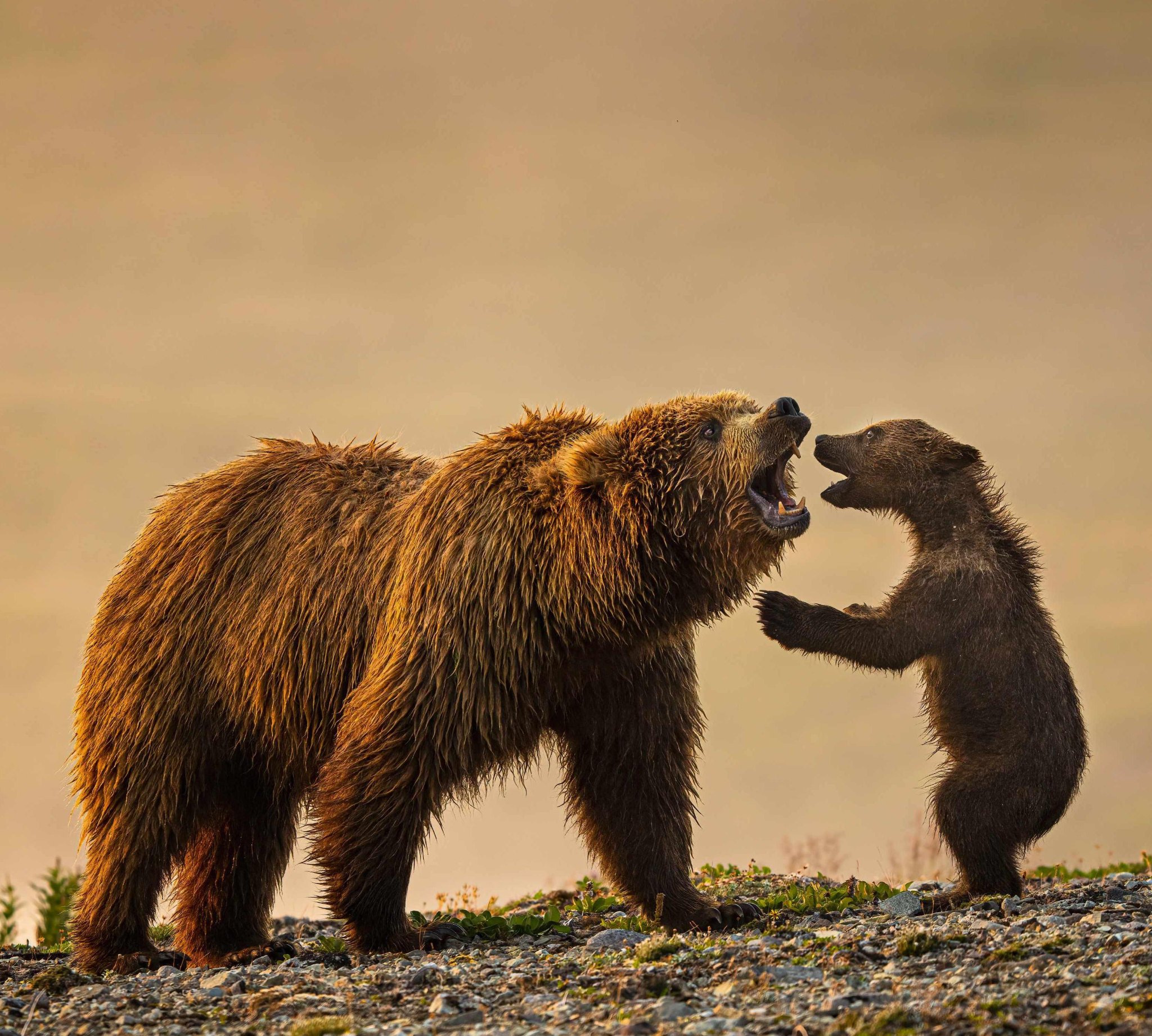
Mother knows best
Having no siblings with whom to spar, this six-month-old cub must learn how to handle himself in a fight from his mother. After batting and nipping at her, she responds with a gentle tussle. Though brown bears aren’t strictly territorial, adult males are protective of their space and mothers can be very aggressive.
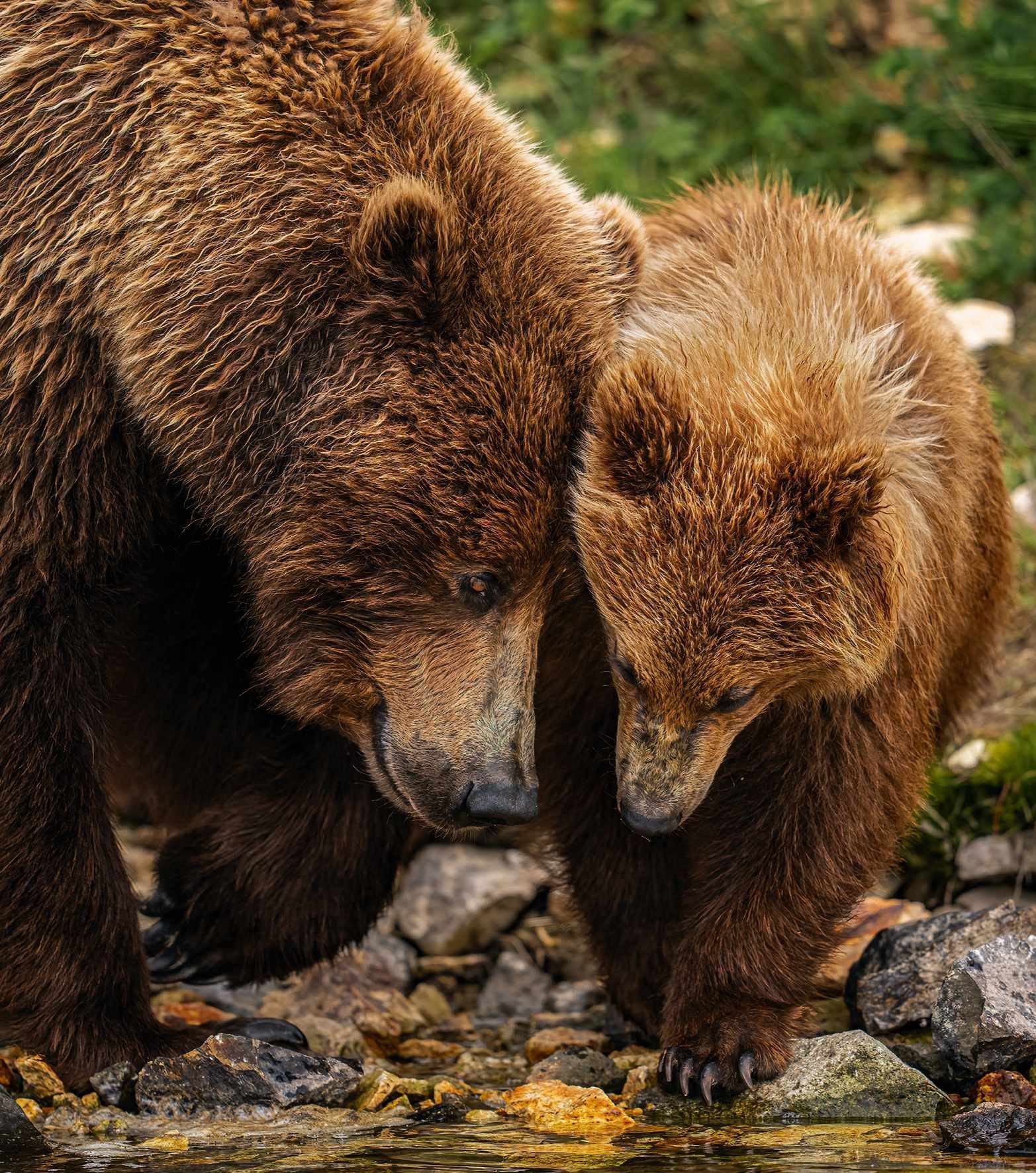
Speaking without words
A nudge with the head is one way this cub reinforces the familial bond with his mother on the riverbank. Bears use body language as well as vocalisations to communicate; cubs whimper and cry to get mum’s attention, while she’ll make a popping noise to alert her offspring to potential threats.
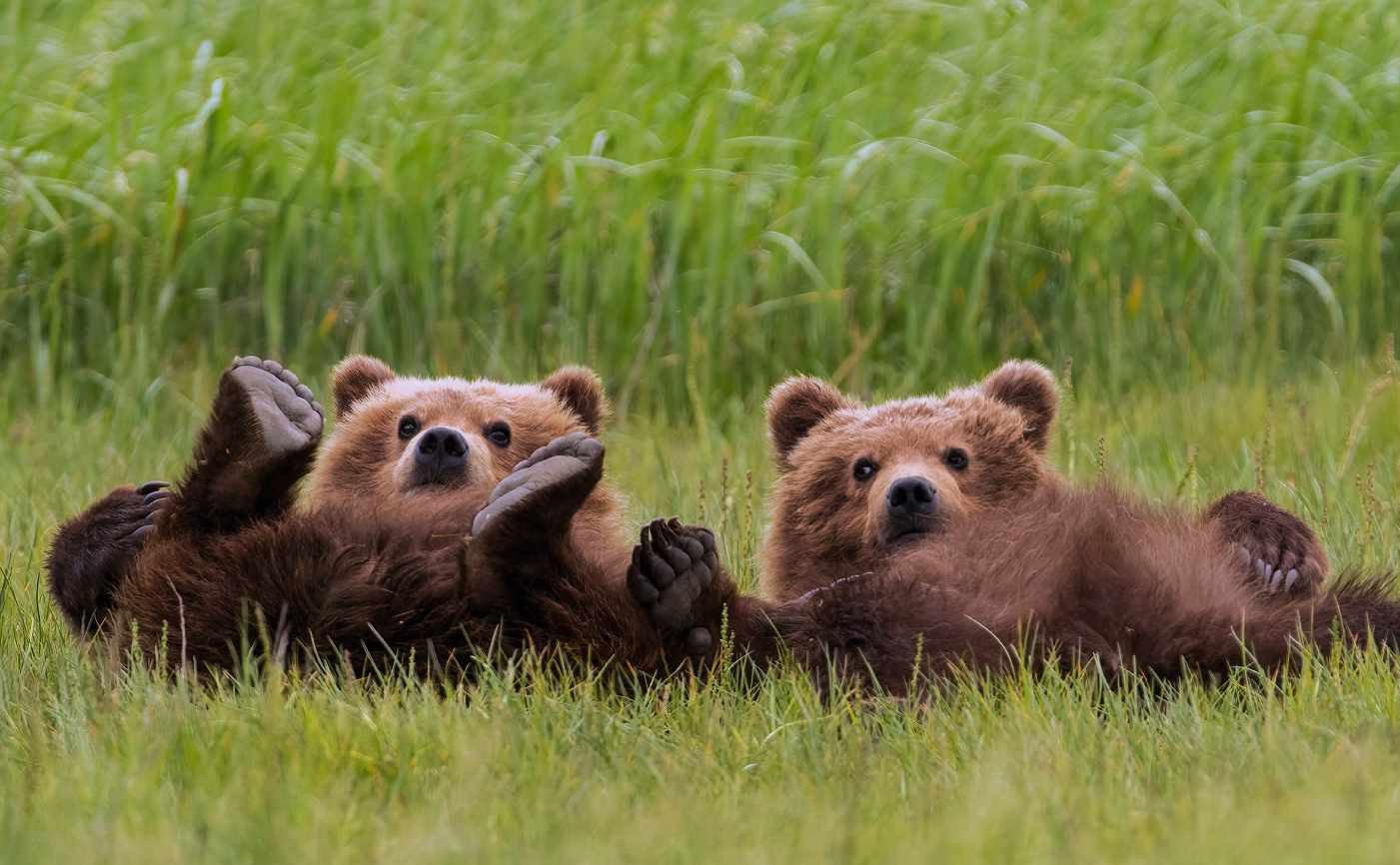
Rough and tumble
A pair of first-year cubs pause during a play bout – an important part of their developmental process when they learn to fight. They’ll also learn to forage and socialise, ready to deal with other bears at popular feeding grounds such as sedge meadows or rivers during salmon runs when they gather in large numbers, sometimes as many as ten or more in a 50m stretch of water.
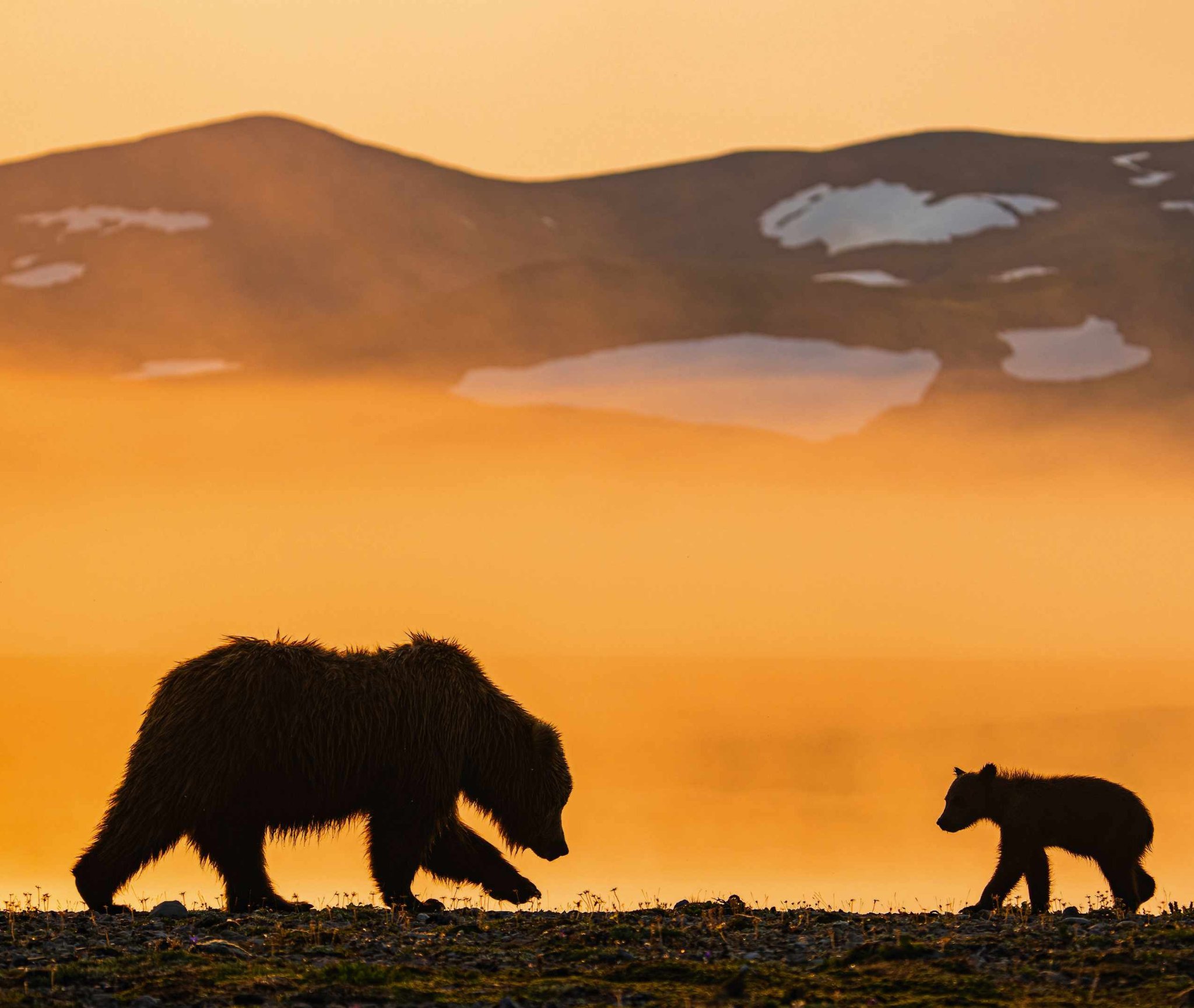
Golden hour
Having enjoyed a hearty breakfast of salmon, a female and her young cub climb up from the river onto the Alaskan tundra to find a patch of scrub where they can nap in peace and safety. That’s typical of a brown bear’s cyclical summer behaviour in Katmai: feast till full (a hungry bear can devour 30 fish in a day) then snooze while digesting the rich meal.
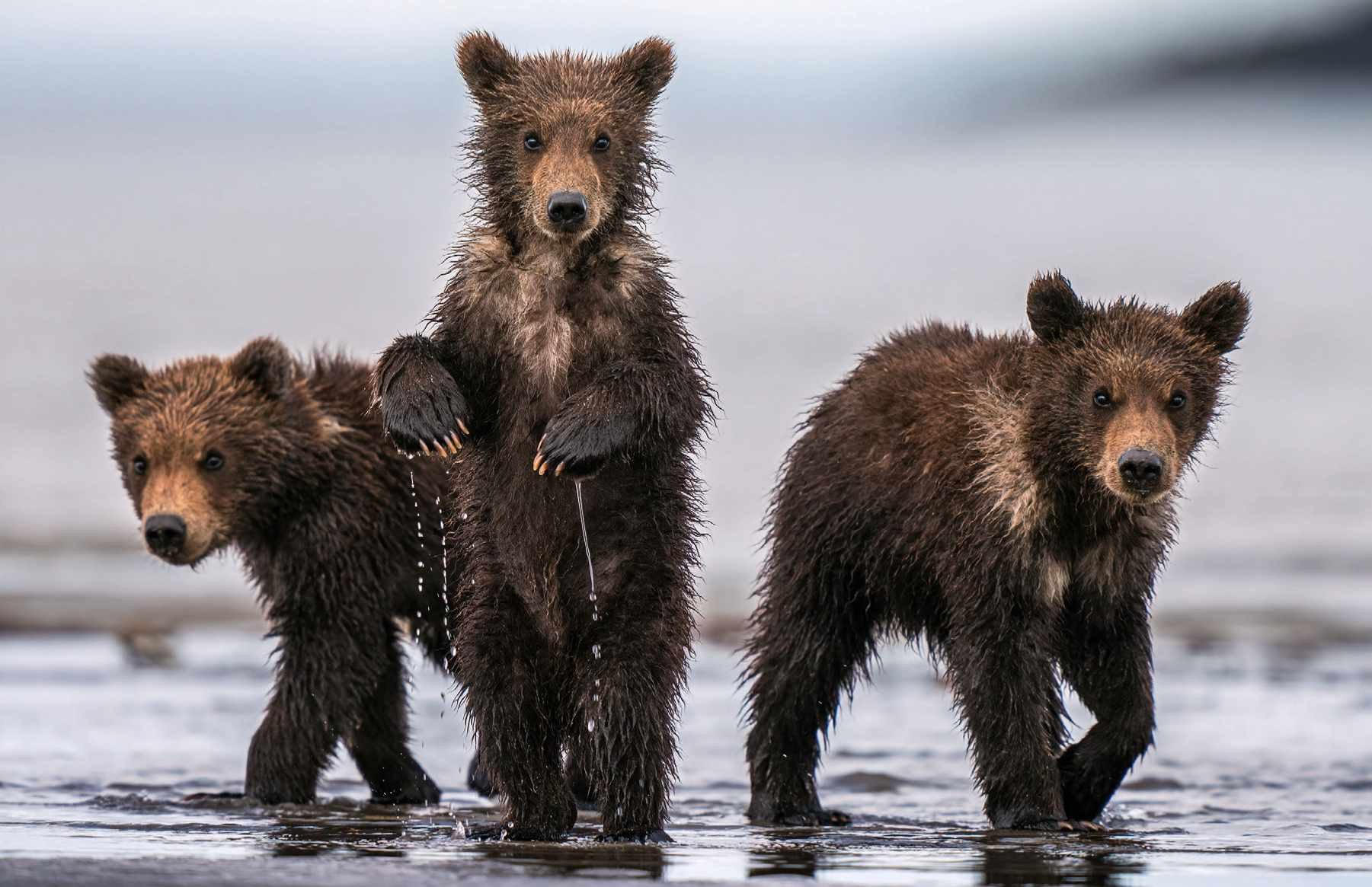
Shore thing
Three young cubs, perhaps five months old, linger on a tidal flat while mother snatches salmon from a deeper creek nearby. She won’t be far away, returning to her youngsters every few minutes in between fishing forays. It pays to stay alert: more than one-third of cubs may die in their first year of life.
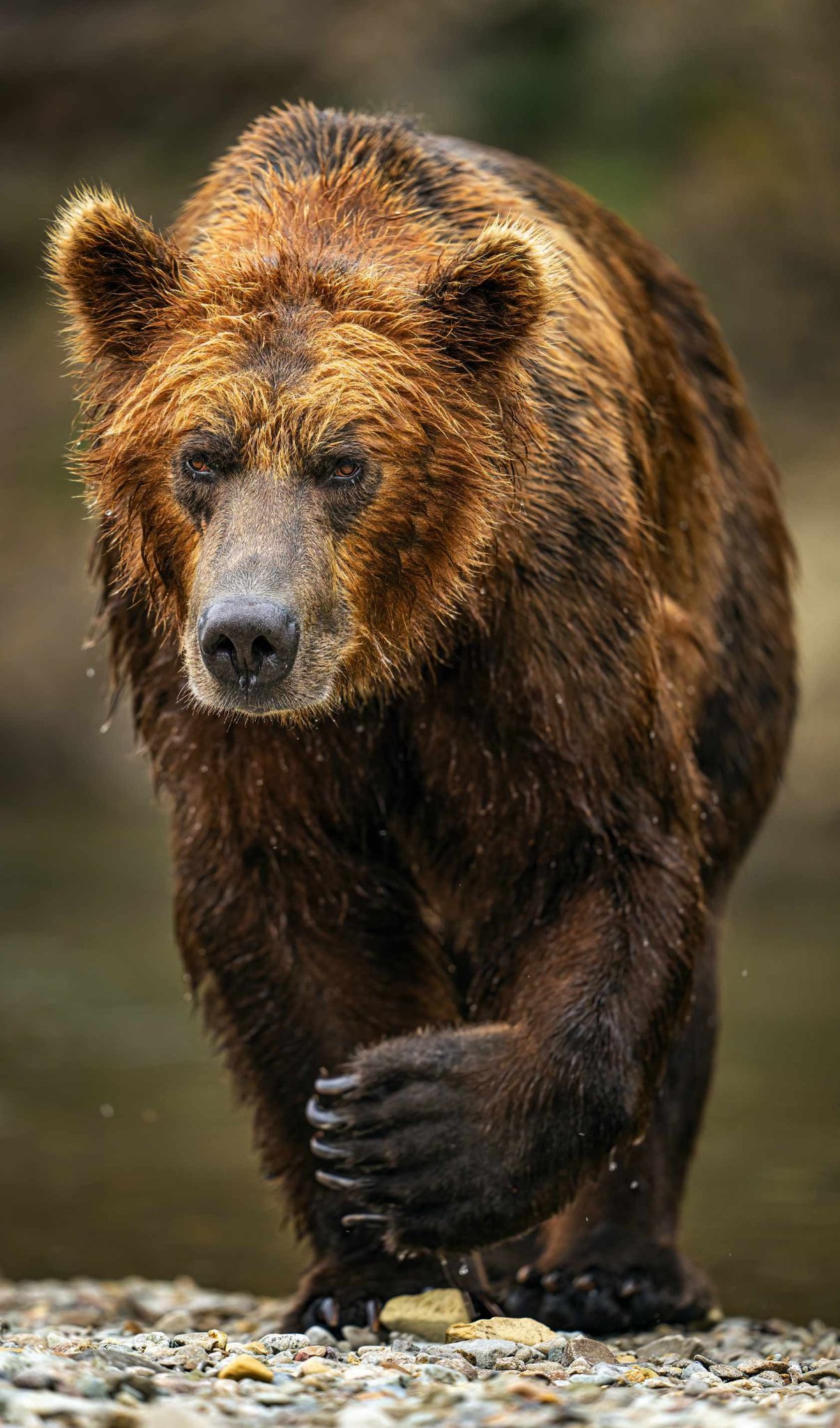
Next steps
A big male ambles along the riverbank to his next fishing spot. Bears often follow the salmon run as it moves upstream to target the most dense masses of fish. He’s not in a rush – though adults can reach 65kph in short bursts. Still, it pays to enjoy the bounty while you can. Soon enough, the arrival of autumn will signal time to retreat to a den, where bears slumber in winter torpor for six months or more before emerging the following spring to feed up once again.
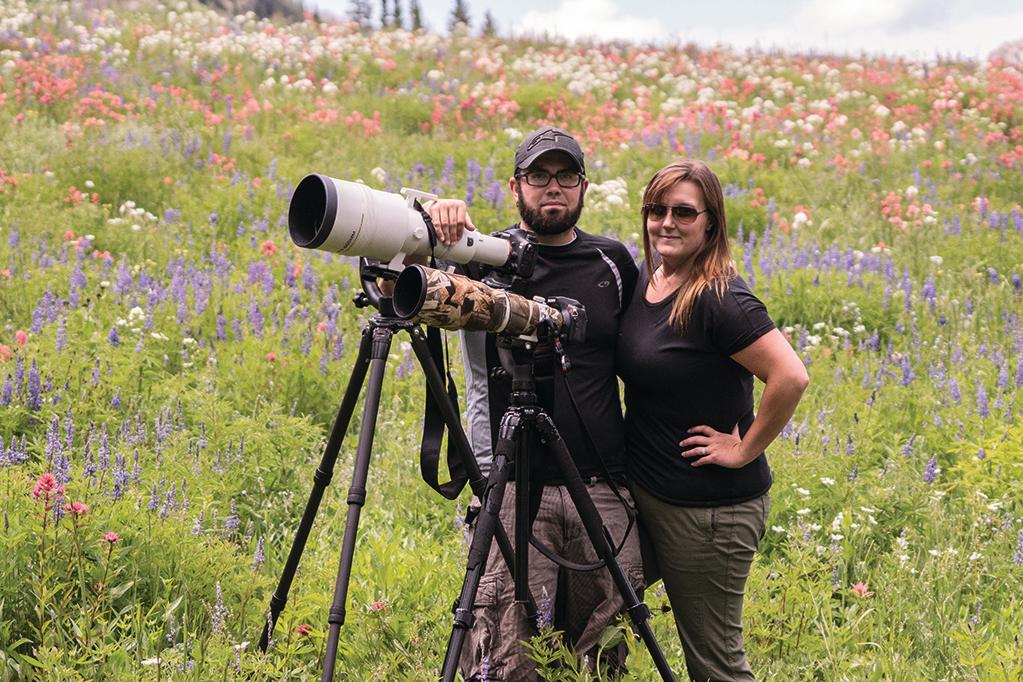
ABOUT THE PHOTOGRAPHERS
Kate and Adam Rice of KAR Photography are nature photographers based in the American West and Alaska, specialising in large mammals, birds and landscapes. See more of their work at karphotography.net.